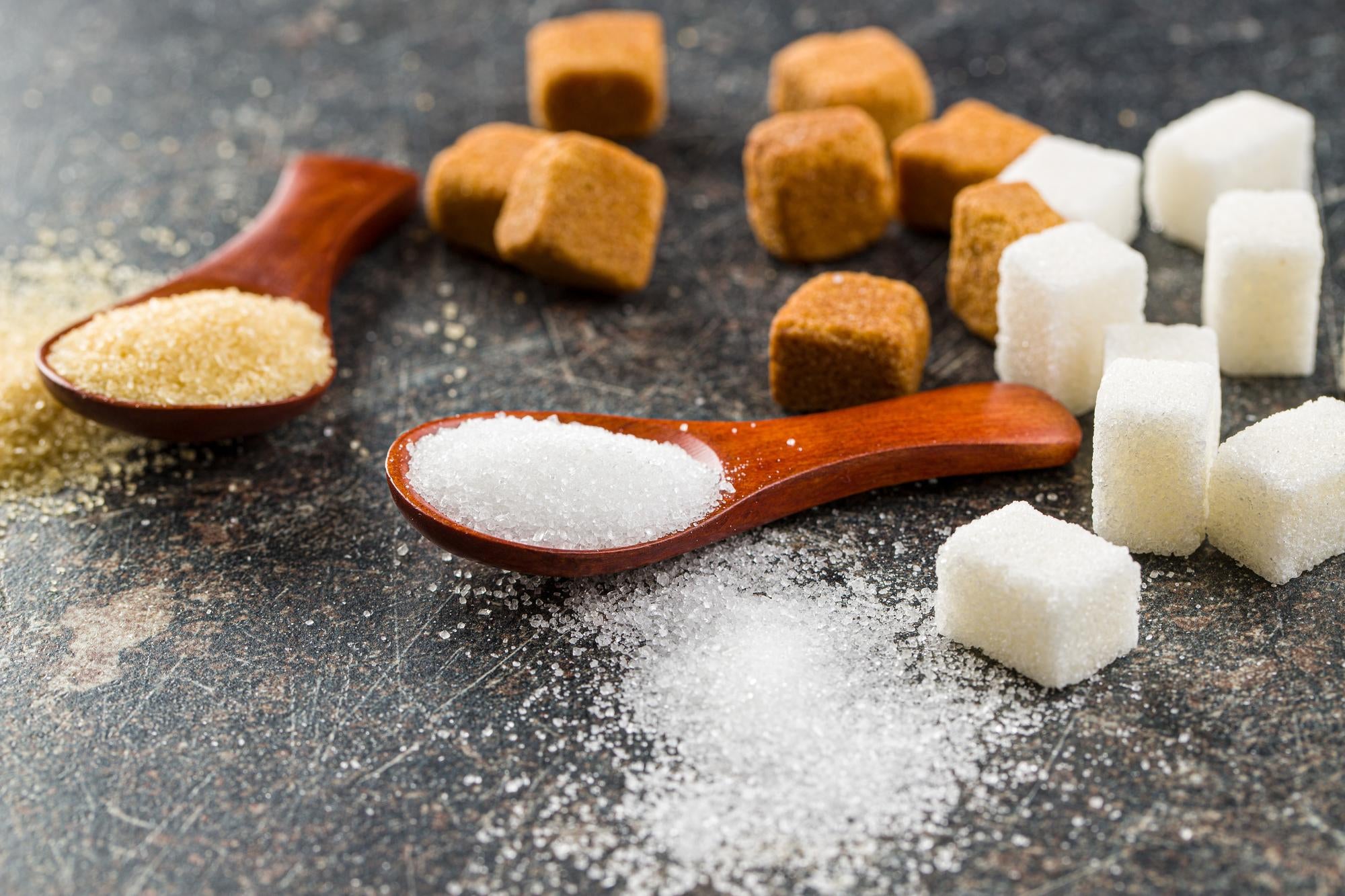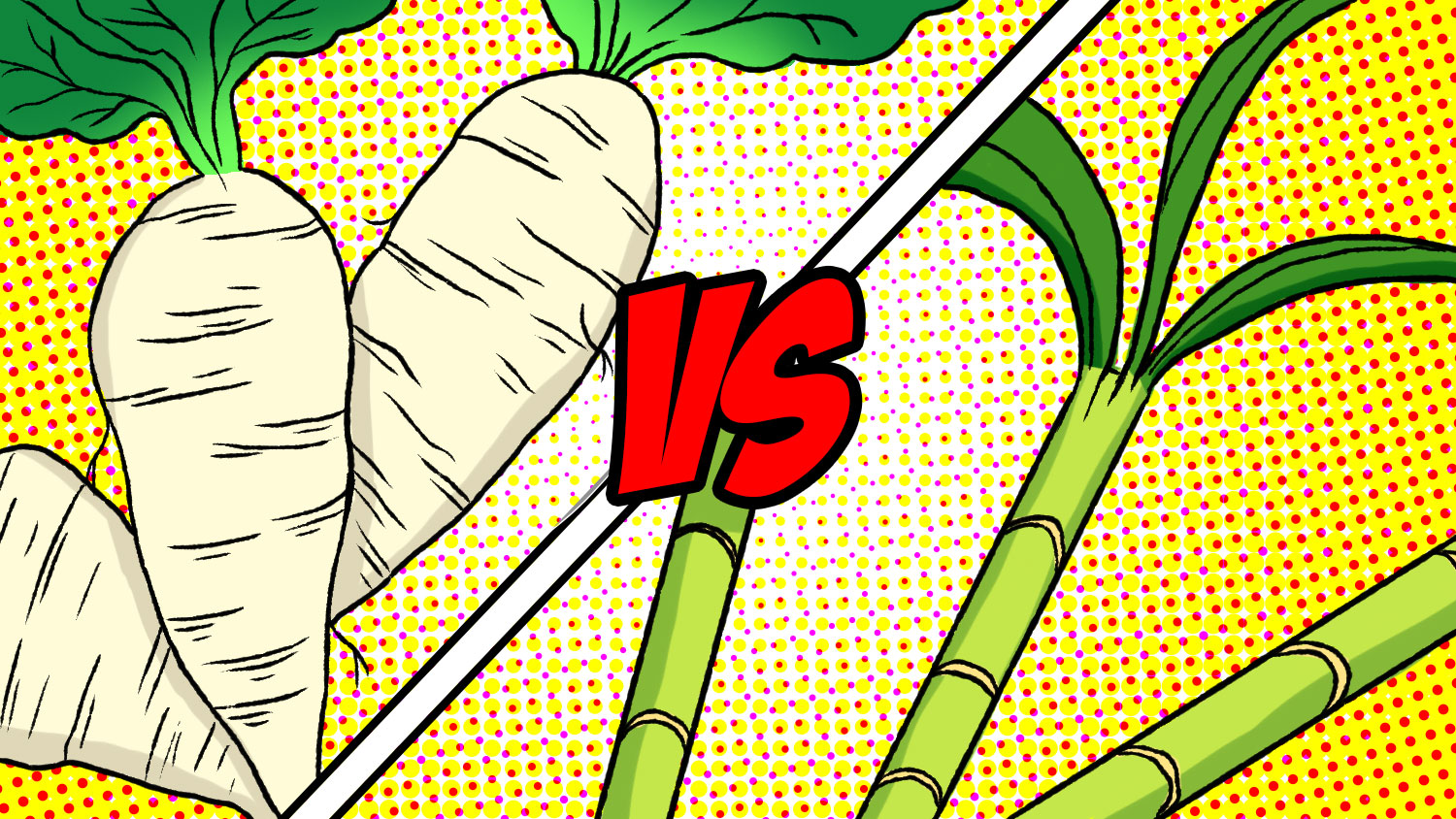Sugar beet vs sugar cane: How climate requirements impact output
Revealing the Fact Behind Sugar Beet Vs Sugar Cane: Benefits, Uses, and Processing Techniques Clarified
The distinction in between sugar beet and sugar cane is typically forgotten in discussions about sugar manufacturing. Each plant provides unique advantages and applications in various markets. Their cultivation methods and processing strategies also vary especially. Understanding these subtleties is vital for stakeholders in the sugar market. What implications do these differences have for health and wellness, taste, and ecological impact? Discovering these aspects can disclose much deeper understandings right into the worldwide sugar market.

Overview of Sugar Beet and Sugar Cane
Sugar beet and sugar cane are two primary sources of sugar, each with distinctive characteristics and farming approaches. Sugar beet, a root veggie, thrives in pleasant environments and is generally gathered in the autumn. Its high sugar web content, ranging from 15% to 20%, makes it a beneficial crop for sugar production. The process involves drawing out juice from the beets, which is after that fine-tuned into granulated sugar.
In contrast, sugar cane is a tropical turf that flourishes in cozy, moist atmospheres. It can accomplish a sugar content of as much as 14%, yet its high, coarse stalks call for substantial handling. The cane is crushed to remove juice, which undergoes boiling and condensation to generate sugar. Both resources add substantially to the international sugar supply, with sugar beet mainly cultivated in Europe and The United States And Canada, while sugar cane is primarily expanded in Brazil, India, and other exotic regions.
Cultivation Practices: Sugar Beet vs. Sugar Cane
Growing practices for sugar beet and sugar cane vary significantly as a result of their distinct growing conditions. Sugar beetroots grow in cooler environments with well-drained dirt, while sugar cane chooses warmer temperature levels and abundant wetness. In addition, the harvesting strategies utilized for each and every crop reflect these environmental requirements and influence overall yield and quality.
Expanding Conditions Comparison
While both sugar beet and sugar cane flourish in particular ecological conditions, their cultivation methods vary substantially. Sugar beet is largely grown in temperate regions, preferring cooler environments with well-drained dirt and moderate rains. It calls for a growing season of concerning 90 to 120 days, with optimal temperatures between 15 ° C to 25 ° C. On the other hand, sugar cane flourishes in exotic and subtropical environments, thriving in cozy temperatures varying from 20 ° C to 32 ° C. It requires abundant sunlight and consistent rains, often needing irrigation in drier locations. Sugar cane has a much longer growing cycle, generally lasting 12 to 24 months. These distinctions in growing problems significantly affect the geographical distribution and farming methods connected with each plant.
Harvesting Methods Differences
The harvesting strategies for sugar beet and sugar cane show their unique development characteristics and farming techniques. Sugar beet is commonly harvested mechanically, with harvesters created to root out the entire plant, ensuring very little soil disturbance. The beetroots are then carried for handling quickly after harvest to preserve top quality. On the other hand, sugar cane harvesting often involves a mix of guidebook and mechanical approaches. Workers might at first reduce the cane by hand, specifically in areas where mechanization is less practical. Consequently, specialized machinery is employed to gather and carry the cut stalks to processing facilities. These differing strategies not only influence efficiency however also affect the quality and return of the last sugar products, showcasing the flexibility of each plant to its environment.
Nutritional Comparison and Health Benefits
When contrasting the nutritional accounts of sugar beet and sugar cane, it becomes clear that each deals unique wellness benefits. Sugar beets are rich in important nutrients like folate, manganese, and potassium, which add to general health he has a good point and wellness. They additionally include fiber, which helps digestion and may assist control blood sugar levels. Additionally, sugar beetroots are understood for their antioxidant buildings, which can deal with oxidative anxiety.
On the other hand, sugar cane is mainly made up of sucrose, giving fast power. While it does not have the exact same level of minerals and vitamins found in sugar beets, sugar cane does consist of little amounts of B nutrients such as calcium and magnesium. In addition, sugar cane juice is usually promoted for its hydrating buildings and possible health benefits, including improved digestion health and wellness. Ultimately, the selection in between sugar beet and sugar cane might depend on specific wellness goals and nutritional choices.
Flavor Profiles and Culinary Uses
Flavor profiles of sugar beet and sugar cane differ significantly, influencing their culinary applications (Sugar beet vs sugar cane). Sugar cane, with its naturally wonderful and complicated taste, is usually favored in beverages, treats, and different culinary dishes. It offers a rich, caramel-like note that boosts the preference of products such as syrups, molasses, and rum. In contrast, sugar beet has an click for info extra neutral and less fragrant taste, making it suitable for applications where sweetness is preferred without changing the dish's intrinsic flavors. It is often used in processed foods, baked products, and sweeteners
Culinary experts often choose sugar cane for its depth and splendor, specifically in gourmet food preparation and craft drinks. Alternatively, sugar beet's adaptability as a sweetener in mass-produced things accommodates a wider market. Ultimately, the selection in between these two sugars can considerably affect flavor accounts and overall cooking experiences.
Environmental Impact of Sugar Manufacturing
Sugar manufacturing, whether from sugar beet or sugar cane, lugs significant environmental ramifications. Sugar cane farming frequently results in deforestation, particularly in tropical regions, disrupting neighborhood ecosystems and adding to biodiversity loss. The comprehensive use plant foods and pesticides in both sugar beet and sugar cane farming can lead to soil destruction and water pollution, impacting bordering habitats and areas. Additionally, the high water consumption required for sugar cane irrigation positions a risk to regional water products, particularly in deserts.
Conversely, sugar beet farming generally takes place in temperate environments, which may mitigate some deforestation issues. Nonetheless, it is not without its very own challenges, consisting of dirt erosion and dependence on chemical inputs. Overall, the environmental effect of sugar production is multifaceted, demanding sustainable farming techniques and awareness of source monitoring to reduce damage to environments and advertise environmental wellness.
Processing Strategies: From Plant to Sugar
Many processing methods are used to transform sugar beet and sugar cane into granulated sugar, each technique reflecting the special attributes of the source plant. For sugar beets, the process starts with cleaning and cutting the origins into slim strips, which are then based on diffusion-- a technique where warm water reference essences sugar from the beet slices. The resulting liquid is detoxified, focused, and taken shape.
On the other hand, sugar cane processing involves squashing the stalks to draw out juice, adhered to by clarification to eliminate pollutants. The juice is after that vaporized, leading to syrup that undertakes condensation. Both processes are complied with by splitting up of the sugar crystals from the molasses, which is a byproduct. The last phases consist of drying and packaging the granulated sugar for distribution. These strategies highlight the unique paths whereby these 2 plants produce sugar, each with its very own collection of challenges and efficiencies.
Financial Aspects of Sugar Beet and Sugar Cane Industries
The economic landscape of the sugar beet and sugar cane industries exposes notable differences in production prices, market dynamics, and regional influences. Sugar beet, mainly grown in warm environments, frequently sustains higher manufacturing expenses due to labor and input costs. Conversely, sugar cane flourishes in exotic areas, generally taking advantage of reduced labor expenses and desirable climatic conditions, which can lead to greater yields.
Market dynamics likewise differ, as sugar cane dominates worldwide production, representing approximately 80% of sugar result. This prevalence influences pricing structures and trade circulations. In contrast, sugar beet is a lot more regionally focused, particularly in Europe and The United States and Canada, affecting regional economic situations based on beet manufacturing.
Furthermore, variations in worldwide sugar prices can substantially influence both sectors, influencing farmer revenue and investment degrees. Recognizing these economic aspects is vital for stakeholders aiming to browse the intricacies of the sugar market efficiently.

Frequently Asked Inquiries

Can Sugar Beet and Sugar Cane Be Intercropped Effectively?
Intercropping sugar beet and sugar cane offers obstacles because of differing growth demands and environmental needs. With careful administration and appropriate conditions, it may generate benefits such as boosted dirt health and wellness and source efficiency.

What Are the Historic Origins of Sugar Beet and Sugar Cane?
The historical origins of sugar beet trace back to 18th century Europe, while sugar cane has roots in Southeast Asia, cultivated for countless years. Both plants have actually significantly influenced worldwide sugar manufacturing and farming.
How Do Sugar Beet and Sugar Cane Affect Soil Health And Wellness?
The results of sugar beet and sugar cane on dirt wellness differ. Sugar beet can enhance dirt framework and nutrient content, while sugar cane might diminish nutrients otherwise handled appropriately, influencing long-lasting dirt fertility.
Exist Any Kind Of Arising Technologies in Sugar Manufacturing?
Arising technologies in sugar production consist of accuracy farming, progressed genetic modification for greater returns, and innovative removal methods. These advancements aim to boost effectiveness, reduce ecological impact, and enhance the general sustainability of sugar manufacturing processes.
What Are the Trick Differences in Labor Needs for Both Plants?
The essential distinctions in labor needs for sugar beet and sugar cane lie in planting, harvesting, and handling. Sugar beet vs sugar cane. Sugar beet usually demands more mechanization, while sugar cane often calls for extra hand-operated labor for collecting and refining stages